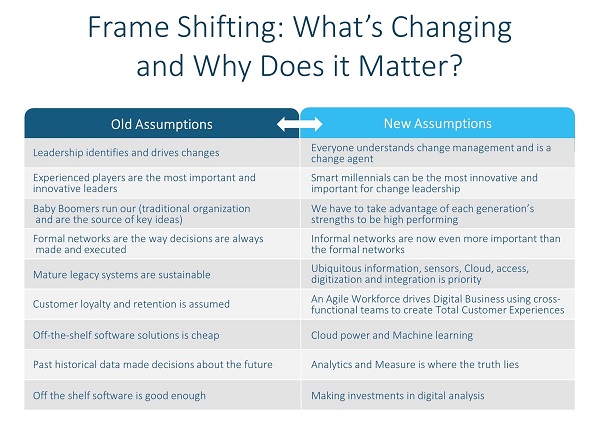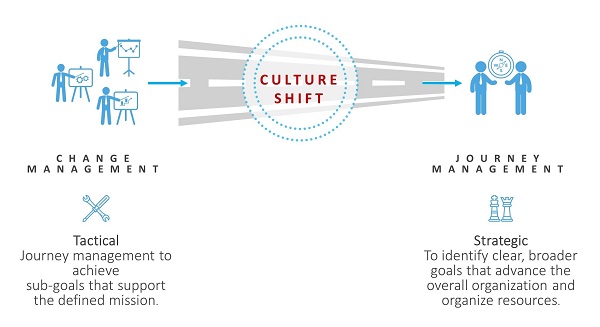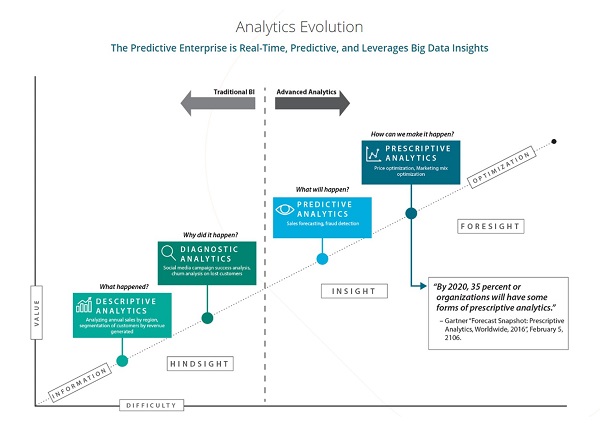Introduction
In the past how people got aligned to new organizational projects and initiatives was pretty simple.
You created the business case for change, hired a project manager, and brought on change management contractors and consulting firms to deliver straight off the shelf solutions, and then utilized a variety of change templates for stakeholder management, communications, training, etc.
You hoped for the best, while in the back of your mind, was always the nagging thought that you saw in many research reports “70% of change management efforts have failed.”
This worries you, as no one likes to spend their time, money, investment and energy then end up in failure!
On the whiteboard in your office, you write the words, “How Can I Make Change Work, When Everything is Changing?”
Are there any “Rules of the Road” to help your company steer clear of the road hazards and pitfalls that could drive your transformation efforts off a cliff before truly understanding the terrain you have embarked upon?
A great article by Mark H, a Leadership and Organizational Transformation “Thought Leader” and consultant with Consult 2050.
Fast Forward to the Present with a Look to the Past: What’s Changing?
Let’s step back for a minute and think about the assumption we had about business in the past, and look at what’s changing and why it matters”
 Many old assumptions we had about the past are no longer relevant and in many cases are holding companies back from evolving and transforming people, technology, processes and customer experiences for the 21st Century. The new era of business performance and growth will come from data driven, lean, innovative and fast companies who are quickly tearing down the walls of capital reserves and massive economies of scale of the older traditional corporations.
Many old assumptions we had about the past are no longer relevant and in many cases are holding companies back from evolving and transforming people, technology, processes and customer experiences for the 21st Century. The new era of business performance and growth will come from data driven, lean, innovative and fast companies who are quickly tearing down the walls of capital reserves and massive economies of scale of the older traditional corporations.
Rules for the Road # 1. Being Prepared to Stop – is Harder than you Think.

How many projects in your company have gone on for years without anyone questioning the value they deliver, how they fit the current strategy, who on the team needs to be deployed in more critical parts of the organization, and what would be the impact of stopping and sun setting these efforts? It’s hard to give up things that feel comfortable.
You need to be prepared to stop and move your thinking into more of a “Journey Management” approach that is strategic and clear with broader goals that advance the overall organization. This is versus a “tactical” approach to change, which mostly focuses on sub-goals of a department, plant or functional part of the company.
Rules for the Road # 2. Many Winding Curves Ahead, and if you Don’t Know “what the end in mind looks like” Road Hazards Can Stop you Cold.

Enter the world of Digital Evolution. Pervasive networks, inexpensive devices, miniaturizations of technology, and advancements in computing power have driven technology to be ubiquitous in our daily lives and in work environments around the world.
Simply driving ahead without understanding the road that must be taken is a formula for confusion, conflicting goals and failed results.
The question to ask ahead of time before embarking on the journey, and just start driving is, “How can we ensure the rewards of Digital Transformation while decreasing the risks?”
The ultimate goal of the final destination is the ability to maximize Value Realization across your business, processes, customer experiences, technology and the human side of change.
In order to achieve this evolution, you will need to adopt a more strategic approach to journey management that utilizes the tactics of change management to generate true cultural shifts in an organization.

An entire article could be devoted just to this topic, but the key thing is to understand the distinction between change and journey management as tactical and strategic approaches. An organization’s ability to change and capacity for change separate long term success from failure and journey management provides that broader perspective by introducing concepts like:
- Strategic change founded in systems thinking
- An overarching plan and strategy for an organization’s change, culture shift, and organizational refocus
- A portfolio of change initiatives
- Human focused rather than tool focused actions
Rules for the Road # 3. Accelerate the Speed of People Alignment

Aligning your people in a Digital Business Management environment requires an acceleration of speed. Change inherently focuses on the unknown. Agile change management embraces speed, and carries out the following:
- Increased individual and team member accountability
- Accelerating team focused momentum
- Frequent stand up meetings
- Real time schedule management
- Highly focused tasks
- Focus on fluid work that takes advantage of the organizations’ best assets, your people
- Improved probability of timely and full impact delivery
- Clearly knowing what success looks like and what “done” means
Rules for the Road # 4. Sometimes Road Signs like Data Can Be Confusing

With massive amounts of data being generated in organizations, truly understanding what it means can be confusing.
For most of history insights from data were achieved by looking to the past to help people make decisions about the future. Now, due to the power of the cloud, machine learning and predictive analytics can provide true insights into customer experience, people utilization, behaviour, capacity, profits and productivity.

The transformation into a Predictive Enterprise means that your organization establishes and embraces the technologies and tools that shift activities away from the traditional enterprise data warehousing and reporting mechanisms, to modern business-led self-service analytics.
Leading companies are already utilizing advanced analytics as a competitive tool. Utility companies are forecasting how much energy solar panels can generate at a given location, or when operational equipment will malfunction. Exploring advanced analytics opens a new realm of possibilities for businesses, and the first step is aligning business leaders and IT departments.
An aligned people focused Agile work force, challenged with the management of change, when everything is changing, understands and uses the power of data analytics to accelerate the pace and adoption of change in the shortest and most meaningful way.
Rules for the Road # 5. What’s Ahead over Horizon?

Understanding the road once travelled, provides confidence that we have made the journey successfully, and can achieve a better route that is faster with sensible alternatives, and support from all corners of the organization, from the “shop floor to the board room.”
However, as we look over the horizon to the digital journey not travelled, many lesson’s learned come to mind:
- Always conduct a digital and people alignment gap analysis and research before you begin
- Make sure you have an understanding of what the “end of the journey” looks like
- Any journey can be less stressful if we have additional drivers, and support in the organization, who can help us when we get fatigued
- Speed is essential in business today, prepare your people and processes to accommodate and prepare for this. Train where necessary
- Test out your old assumptions and become aware of what is changing in business today
- Pursue data analytics
- Stop and revisit your old change management approach that is a “cookie cutter” process for change. Create a unique change management approach that is Agile and fit for purpose
- Watch out for all the pitfalls in the road ahead by assessing where, when and how you can best leverage a digital workforce and environment
Conclusion
Aligning your people to a Digital Business Management environment and workplace, when everything is changing, requires focused effort, but it’s a journey worth taking that will sustain the test of time.